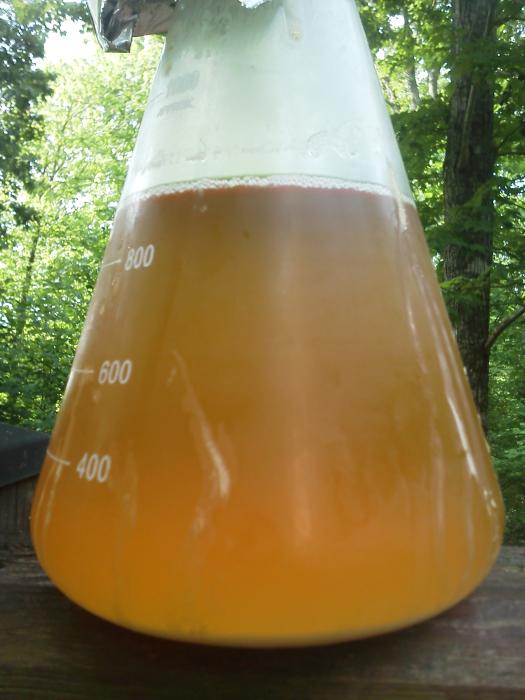So I attempted to make a yeast starter for the first time. First off, I used too small a flask (consider it a lesson learned). I tried to make a 900 mL starter in a 1 L flask. I used just under a 1/2 cup dme. Also, I do not have a stir plate. I just agitated every so often. Anyway, the starter overflowed while i was at work and left a decent ring of white sludge on counter (guessing this to be lost yeast?). I'm guessing i lost ~50mL of total volume. I left the starter go at room temp for 48 hrs, then put in fridge overnight. The pic is after about 12 hrs in the fridge. My first question, do i have enough to pitch? I will be pitching into a 5 gal IPA recipe. There appears to be about 20 mL of slurry (from what I can estimate). Also, I notice that there are some stringy looking floaters. You can't see them in this photo. What you see here is the outside of flask from overflow. Is that normal?



